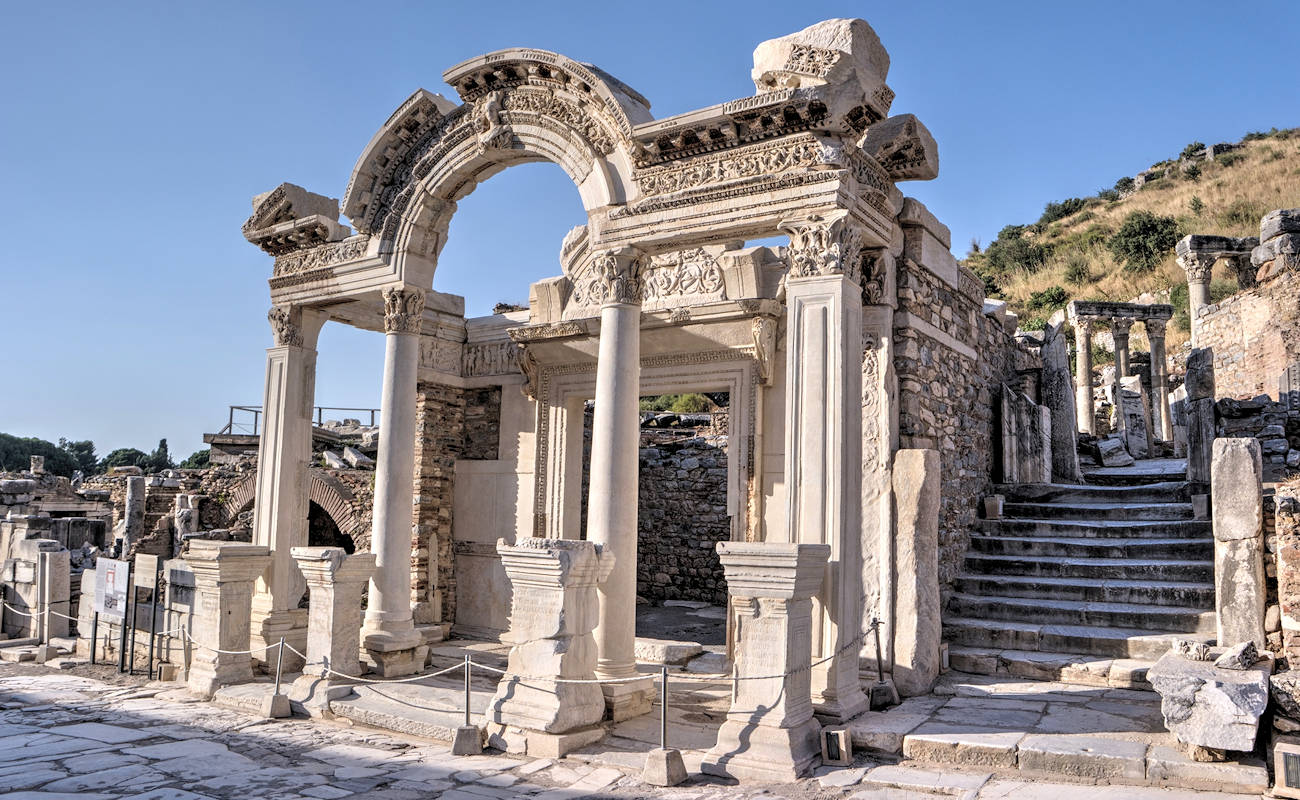
The Temple of Hadrian in Ephesus
The Temple of Hadrian in Ephesus, an ancient city located in what is now modern-day Turkey, is a remarkable testament to the architectural and cultural influence of the Roman Empire in the region. This well-preserved structure is a prime example of Roman architecture and a significant historical site within the archaeological complex of Ephesus.
Construction of the Temple of Hadrian began around 117 AD during the reign of the Roman Emperor Hadrian and was completed in 138 AD. The temple was dedicated to Hadrian and the goddess Artemis. It served as a place of worship and a symbol of the strong Roman presence in Ephesus.
One of the most striking features of the Temple of Hadrian is its magnificent facade, adorned with intricate decorative elements. The facade consists of four Corinthian columns supporting a triangular pediment. These columns are a striking example of the Corinthian order, known for its ornate and delicate design. Each column is topped by beautifully carved capitals, featuring acanthus leaves and volutes, and the frieze above is adorned with intricate reliefs.
The central frieze on the facade of the temple is particularly noteworthy. It depicts a relief composition that celebrates the foundation of Ephesus by Androklos, the mythical founder of the city, who is shown receiving a city plan from the goddess Artemis and the god Hermes. This scene not only pays homage to the city’s origins but also highlights the divine protection of Ephesus.
The temple’s entrance was flanked by two statues, believed to be representations of the imperial family, possibly Hadrian and his wife Sabina. These statues, though largely eroded over time, once contributed to the grandeur of the temple’s entrance.
Inside the temple, there was a cella, a small chamber that likely housed a statue of Hadrian. The statue of the emperor would have been a focal point of veneration, and offerings and prayers were made in his honor. The temple also featured a courtyard with a reflecting pool, adding to its aesthetic appeal.
Interestingly, during later periods, the Temple of Hadrian was repurposed into a different type of religious building, likely a church, reflecting the changing religious landscape of the region as Christianity gained prominence.
Today, the Temple of Hadrian stands as one of the well-preserved and visually stunning structures within the archaeological site of Ephesus. Visitors to Ephesus can admire the temple’s intricate facade, the exquisite craftsmanship of its columns and reliefs, and the historical significance it holds as a symbol of Roman influence in this ancient city. It serves as a tangible connection to the past, offering a glimpse into the architectural and cultural legacy of the Roman Empire in Ephesus.
